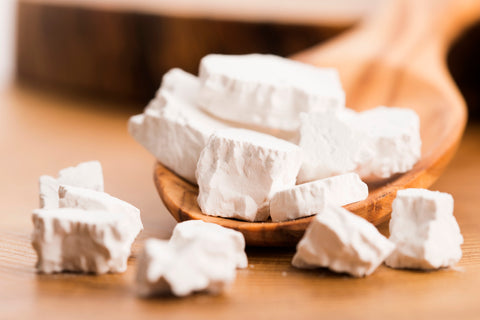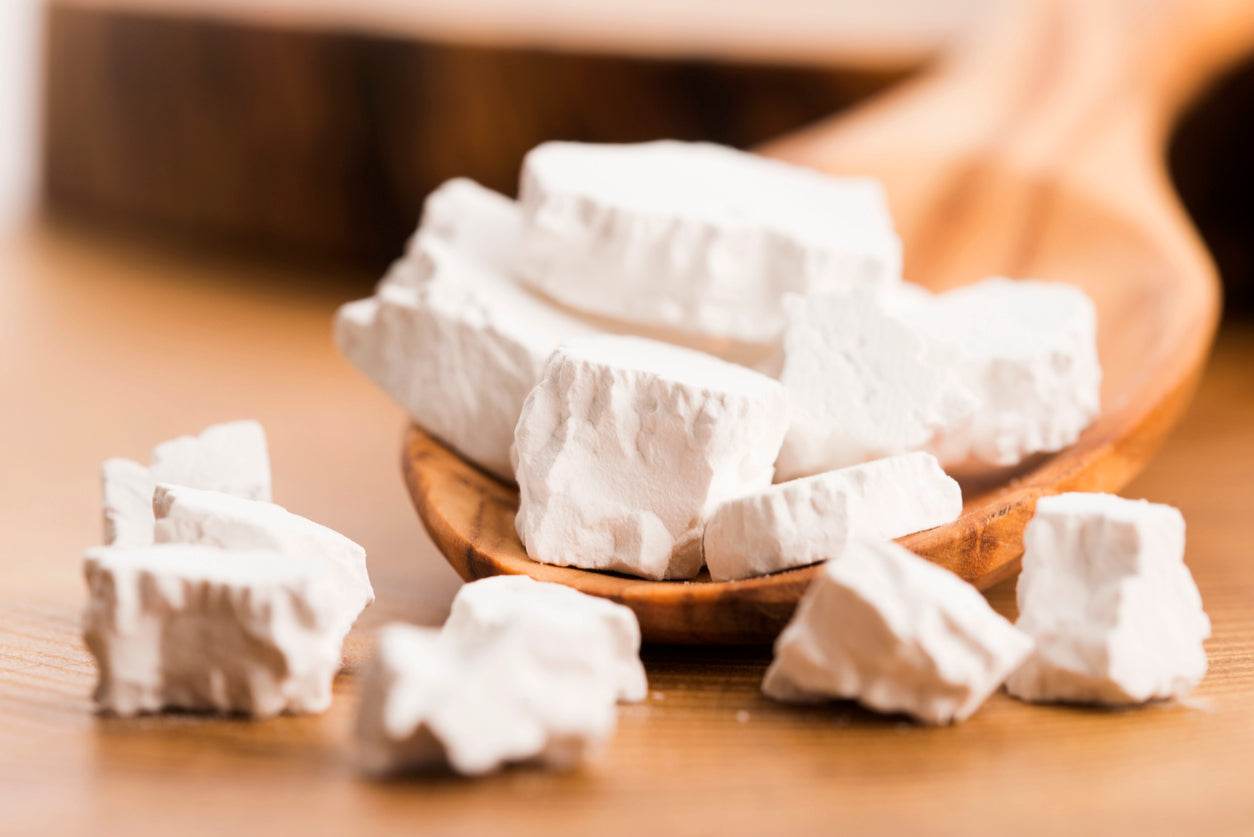
The roots of plants are often regarded as sacred in Ancient Chinese wisdom. They hold the source of energy for the entire plantwhile it is growing and draws its nutrients from the soil of our earth. Drawing on nutrients and energy from their environment make them highly beneficial for our health when ingested in an herbal tea or infused in food. One particular root that has gained more popularity recently is the Kuzu root.
We often receive questions about kuzu root starch – What is it all about? How do I use it? What are the benefits? So we finally decided to share what we know of this root along with some guidance on how to use its well-known starch form.
What is Kuzu root?
Kuzu root, also known as Ge Gen or Pueraria, is a perennial vine common in shaded mountainous regions of China. It is often collected in autumn and winter months, cut into thick slices and dried for use in herbal decoctions. Many Chinese Medicine practitioners use the root in customized herbal formulas for their patients depending on their constitution, issues, condition, and concerns. The form most readily available to us today is the starch form of Kuzu root. This form makes it easy for anyone to use and also yields the traditional health benefits for the stomach and digestion.
Why the starch?
The starch works exceptionally well because it is an almost tasteless thickening agent. Because a starch is applicable to many recipes and a variety of dishes, this form is easiest to include in your daily routine and diet. In many cases of abdominal aching and intestinal irritation, a bowl of kuzu pudding could bring help, especially for children who do not like over-the-counter medicine. Kuzu root starch can be added to pudding recipes, sauces, creams, baked goods, etc.
Another plus: there are plenty of organic sources. Most starches used in baked goods or traditional dishes use cornstarch and potato starch. These starches are often processed, potentially contain GMOs, and are not easily digested. Because kuzu root starch is natural and available in organic forms, it is often used in place of corn or potato starch when baking. This makes Kuzu starch a much healthier, easier assimilated alternative when cooking.
Common uses
Traditionally, Kuzu root has been used for many different issues ranging from the stomach to the neck. Research studies show that flavonoids in Kuzu could bolster the body’s reaction to constipation, indigestion, vomiting, alcoholism and common cold symptoms. (see Japanese Foods That Heal, Tuttle 2007)
Some experts say that some of kuzu’s complex starch molecules enter the intestines and relieve the discomfort caused by over acidity, bacterial infection, and – in the case of diarrhea – excess water. It is also an excellent home remedy for children with difficult or weak digestion.
Simply making a pudding or fruit sauce will add a soothing element to your diet and a healthier alternative to most desserts and snacks. For some interesting recipes, check out the highly informative book “Japanese Foods That Heal” which features recipes for Kuzu drinks, pies, puddings and more. And before you head into your search for recipes, take some of these words of advice with you from the NSEV Healing website.
Cooking with kuzu Basic Guidelines
- Always dissolve kuzu powder in a small amount of COLD fluid before adding it to the simmering liquid.
- After adding the kuzu to the pudding, heat over medium flame until kuzu begins to thicken, then turn to a low flame.
- It is important to stir kuzu puddings continuously throughout the heating and thickening process.
- This entire process should take only a few minutes. When the “milky” color of the kuzu disappears and the liquid is thick, the cooking is done. The pudding is ready to be eaten immediately. Kuzu does not need to “set” like jello or agar.
- Kuzu puddings can be eaten warm, at room temperature, or cooled.
- Kuzu puddings are best prepared fresh daily. If necessary, they can be refrigerated and prepared every other day. BASIC PROPORTIONS Medicinal pudding 1 cup liquid 2 tablespoons kuzu Thickened drink 1 cup liquid 2 teaspoons kuzu Soup 1 cup liquid 2 teaspoons kuzu Soup broth 1 cup liquid 1/2 teaspoon kuzu Sauce 1 cup liquid 1/2 teaspoon kuzu The exact amount of kuzu to liquid varies based on both the quality of the kuzu and the liquid being thickened. As a general rule, acidic juices, such as lemon or orange, will require about 25% more of the kuzu powder.

Sasha is a Miami native and has earned her BA from Boston University. Her love for Chinese medicine has enabled her to address many different ailments in her life. She is an Herbal Pharmacist in our Miami Beach dispensary and enjoys quiet time with her cats and husband; in that order.










